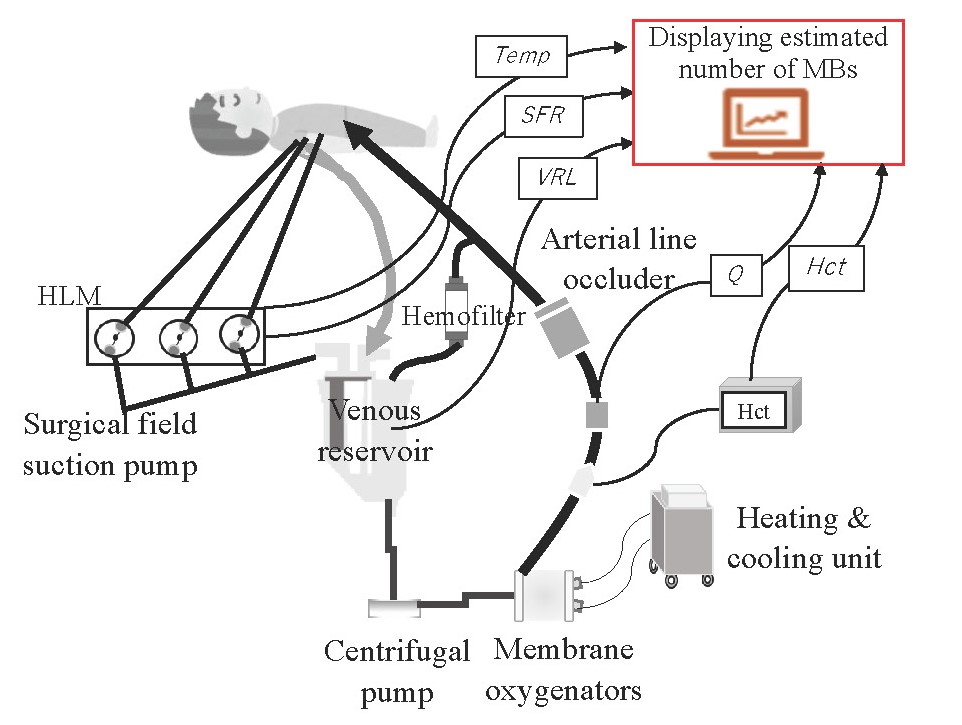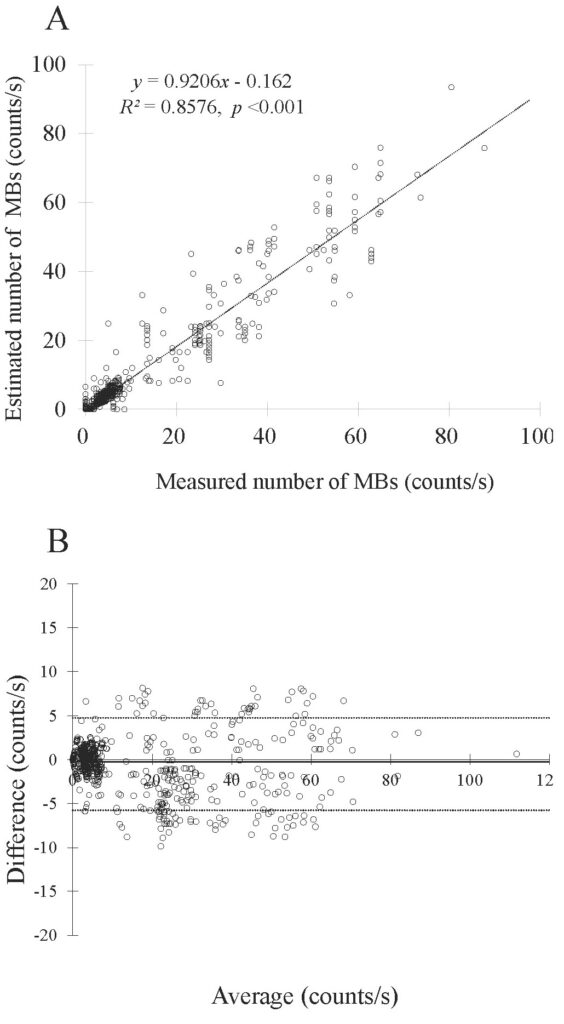広島大学生体システム論研究室では約10年前から人工心肺に関する研究を開始し,博士課程修了生の岡原 重幸先生(純真学園大学保健医療学部教授),高橋 秀暢先生(広島国際大学保健医療学部講師),宮本 聡史さん(広島大学病院診療支援部臨床工学部門部門長),吉野 将さん(広島大学病院診療支援部臨床工学部門)らとともに,血液粘度推定,人工心肺装置の自動制御,血中マイクロバブル発生数の推定などの研究課題に取り組んできました.
https://bsys.hiroshima-u.ac.jp/news/17715
今回新たに,曽 智先生,古居 彬先生とともに人工心肺中のマイクロバブル発生数の機械学習による推定に成功し,IEEE Open Journal of Engineering in Medicine and Biologyに論文がアクセプトされました.
この論文は宮本 聡史さんの博士学位論文の一部になる予定です.今後も本研究チームとともに研究を継続し,臨床での研究成果につなげていければと思っています.ひきつづきよろしくお願いします.
The number of microbubbles generated during cardiopulmonary bypass can be estimated using machine learning from suction flow rate, venous reservoir level, perfusion flow rate, hematocrit level, and blood temperature
Satoshi Miyamoto, Zu Soh, Shigeyuki Okahara, Akira Furui, Taiichi Takasaki, Keijiro Katayama, Shinya Takahashi, and Toshio Tsuji
IEEE Open Journal of Engineering in Medicine and Biology, DOI: 10.1109/OJEMB.2024.3350922. (ESCI, IF=5.8)
URL: https://ieeexplore.ieee.org/document/10382573
PDF: https://ieeexplore.ieee.org/stamp/stamp.jsp?tp=&arnumber=10382573
<論文内容>
Goal: Microbubbles (MBs) are known to occur within the circuits of cardiopulmonary bypass (CPB) systems, and higher-order dysfunction after cardiac surgery may be caused by MBs as well as atheroma dispersal associated with cannula insertion. As complete MB elimination is not possible, monitoring MB count rates is critical. We propose an online detection system with a neural network-based model to estimate MB count rate using five parameters: suction flow rate, venous reservoir level, perfusion flow rate, hematocrit level, and blood temperature. Methods: Perfusion experiments were performed using an actual CPB circuit, and MB count rates were measured using the five varying parameters. Results: Bland–Altman analysis indicated a high estimation accuracy (R2>0.95, p<0.001) with no significant systematic error. In clinical practice, although the inclusion of clinical procedures slightly decreased the estimation accuracy, a high coefficient of determination for 30 clinical cases (R2=0.8576) was achieved between measured and estimated MB count rates. Conclusions: Our results highlight the potential of this system to improve patient outcomes and reduce MB-associated complication risk.
目的:マイクロバブル(MB)は心肺バイパスシステムの回路内で発生することが知られており,心臓手術後の高次脳機能障害はカニューレ挿入に伴うアテロームの飛散だけでなく,MBによっても引き起こされる可能性がある.MBを完全に除去することは不可能であるため,MBカウント率のモニタリングは極めて重要である.我々は,吸引血流量,静脈リザーバーレベル,灌流血流量,ヘマトクリットレベル,血液温度の5つのパラメータを用いてMBカウントレートを推定するという新たなニューラルネットワークベースのモデルを用いたオンライン検出システムを提案する.
方法:実際のCPB回路を用いて灌流実験を行い,5つのパラメータを変化させてMBカウント率を測定した.
結果:Bland-Altman分析の結果,推定精度は高く(R2>0.95,p<0.001),有意な系統誤差は認められなかった.臨床においては,臨床手技を含めると推定精度は若干低下するものの,30症例のMBカウント率の測定値と推定値の間に高い決定係数(R2=0.8576)が得られた.
結論:本論文の結果は,このシステムが患者の転帰を改善し,MBに関連した合併症のリスクを減少させる可能性を強く示している.




